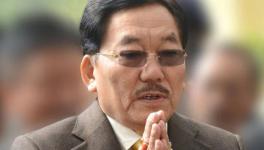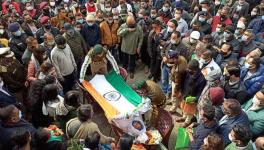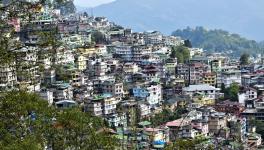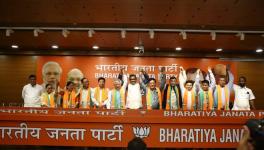Sikkim's Politics has a Leadership Void
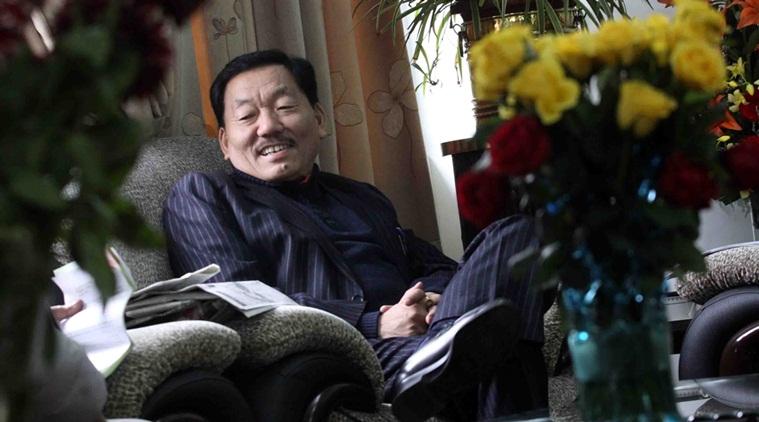
Image Courtesy: Indian Express
Fanfare has greeted Baichung Bhutia's Hamro Sikkim Party. Several national dailies have mentioned his newly-floated party. The former footballer has made the political pilgrimage of meeting the known anti-corruption faces and had held a press conference in Delhi prior to the launch. However, his party will only be one of the many, that are in the fray ahead of 2019, when both the Lok Sabha and state assembly elections will be held.
The current Chief Minister of Sikkim, Pawan Kumar Chamling has broken the record previously held by Jyoti Basu and has become the longest serving CM in India. At present, there is a large section of the population who have grown up knowing no government other than the Sikkim Democratic Front (SDF). With Sikkim's high unemployment, the seeds for anti-incumbency have been sown. According to Jigme Kazi, a veteran Sikkimese journalist, there is definitely a growing anti-incumbency sentiment in the state. However, the problem is a lack of leaders.
The SDF first rode to power on a protectionist platform which was opposed to the Chief Ministership of Nar Bahadur Bhandari in 1994. Pawan Chamling's swearing-in did not lack on symbolic content. The veteran Sikkimese politicians he had invited to the ceremony were chauffeured in the CM's Mercedes, whereas he travelled in a jeep. Since coming to power, the most recent challenge to Chamling's rule was from a former party MLA, Prem Singh Tamang. Tamang, who is known in Sikkim as Golay, rebelled against his party boss. He later floated his own political party along with other rebel MLAs. His party, the Sikkim Krantikari Morcha, trumpeted the anti-corruption bugle. The party neither won the 2014 election nor made a real dent in the SDF's chances to form the government. However, due to some impropriety during his time as Minister for Animal Husbandry, Golay has been incarcerated.
Over the past two years, perhaps in the run-up to the 2019 polls, three new parties have been floated, including Baichung Bhutia's Hamro Sikkim Party. One voice of discontent came from the CM's younger brother, R. N. Chamling, who has floated the Sikkim Rajya Manch. This party like almost every party in the state is standing on an anti-corruption platform. What makes this particular party interesting is that R. N. Chamling refers to the 'byapari' community as one of the communities in the state which deserves protection.
Another newly floated party, the Sikkim Republican Party (SRP) floated by K. B. Rai has so far held events across which are not short on theatrics. The party is of the view that the Nepali community has received the short end of the stick and advocates rather radical reform. The party has once again raised the issue of reserved seats for the Nepali community. This has been a burning issue in the state since the Nepali seats were declared 'general seats'. However, it is only spoken about with lots of finger pointing, while no party has attempted to resolve it. The theatrics of K. B. Rai include burning 'offending' pages from books and government notifications on stage in an almost comical fashion.
In the meantime, Baichung Bhutia's new party has not said anything new regarding the issues facing Sikkim. The party has reiterated the old cliches of corruption, unemployment, lack of leaders, and drug abuse. Whether Baichung Bhutia's new political life will be successful is anybody's guess. He had quit the Trinamool Congress ahead of declaring his ambitions in his home state. However, he lost twice on a TMC ticket, first in Darjeeling, then in Siliguri. In Sikkim, he has to face derision from the SDF alluding to his former political career in West Bengal. It is not difficult for any person living in Sikkim to see that there are numerous problems plaguing the state. It is clear that Sikkim is in dire need of repairs to the environment, society, infrastructure and political set-up. However, there appear to be no politicians willing to actually face the real issues, let alone talk about them.
Sikkim's society is deeply divided on both ethnic and religious lines. The majority Nepali community is highly distrustful of the minority Bhutia and Lepcha communities and vice versa. Perhaps due to better education among the minority communities, the bureaucratic executive has traditionally been their domain, whereas the more populous majority community has held political power. The advent of numerous protestant Christian denominations in the state has also caused the Christians to form a separate interest group based on religion. However, despite their low numbers, they are becoming a lot more visible than they used to be. This has antagonised some sections within the state who seem to view the Christians as 'traitors'. The next social divide which exists lies within the majority community, which is not as homogeneous as people assume. The multitude of smaller language groups have all jumped on the Scheduled Tribe bandwagon. The old Tibeto-Burman languages and festivals are being revived in their desperate bid to prove backwardness. What the SDF has achieved quite efficiently is to manage the social fissures without allowing the radical elements to gain prominence.
As far as the 'national' parties are concerned, Sikkim is a state where they remain non-entities. Their candidates have routinely forfeited their deposits every time. In 2014, the BJP received a meagre 2.39% of the valid votes, whereas the Congress received 2.36%. Unrecognised parties received 40.03% of the votes cast, while the SDF walked away with 53.74% of the votes. At most the national parties are only capable of issuing statements and press releases. At parliament, the SDF has mastered the art of realpolitik and aligns with whichever party or coalition forms the union government. In the state, however, it remains free for all.
The SDF government, despite bringing overall prosperity to the state, has also failed in creating jobs. Sikkim has one of the highest rates of unemployment in the country. Unemployment, however, is most probably a contributing factor to the growing problems of drug abuse and alcoholism. The SDF has also allowed hydro-electric projects to proliferate in the state, despite all the 'green awards'. Then environmental degradation caused by the projects, coupled with the Himalayas seismological sensitivity, is a disaster waiting to happen. Water shortage is another issue that the government has failed to avoid. For example, Siddeshvara Dham, locally known as Char Dham, has been built on the ridge of Solophok outside Namchi. The large garish complex has thus caused all the streams on the hill to dry up.
The problems are evident to any party seeking to bring about a change. However, in all likelihood, change to most parties only means a change of faces. The structures that have enabled and exacerbated these issues will most probably remain untouched. If the SDF wishes to, they can undo the damage they have caused, considering the leadership vacuum which exists. However, it is unlikely that the party would try to change anything if they come back in 2019. It is also unlikely that a new government in the state would do anything either. In the meantime, contenders will attempt to utilize the anti-incumbency sentiments to further their careers without advocating any real change. The people of the state will thus continue to remain captive.
Get the latest reports & analysis with people's perspective on Protests, movements & deep analytical videos, discussions of the current affairs in your Telegram app. Subscribe to NewsClick's Telegram channel & get Real-Time updates on stories, as they get published on our website.











